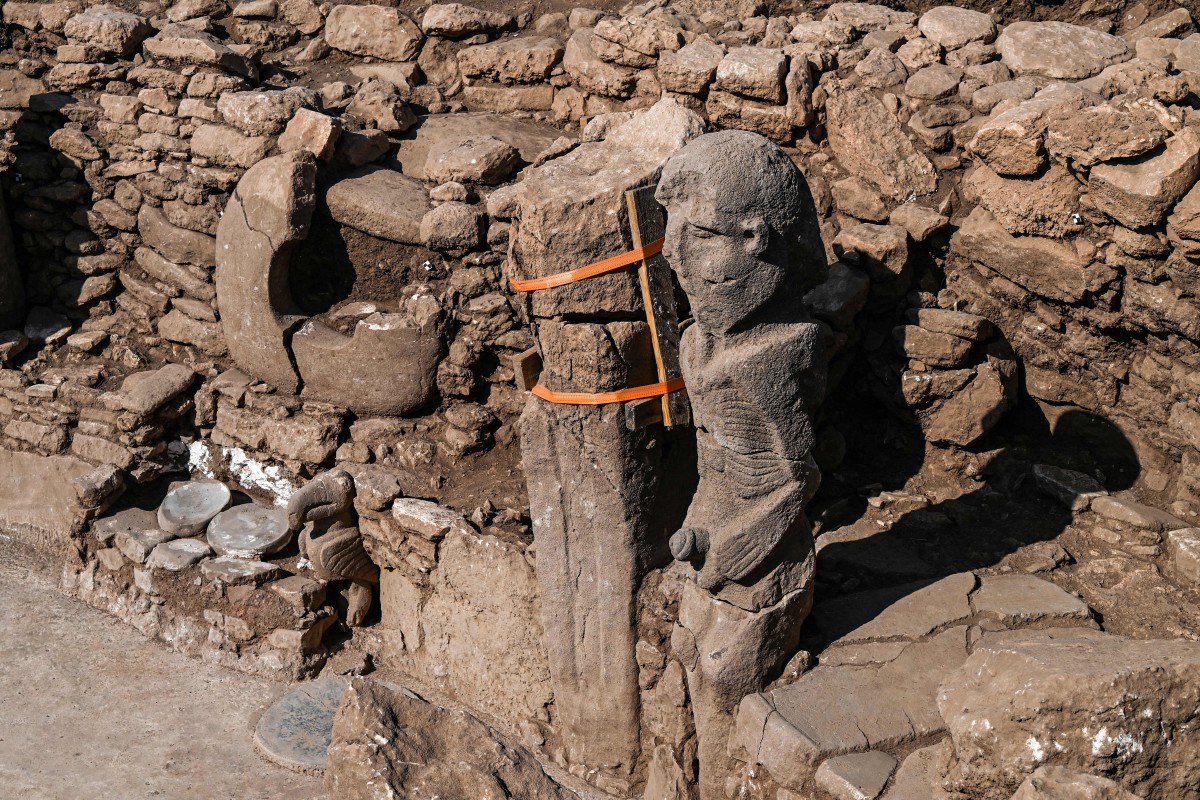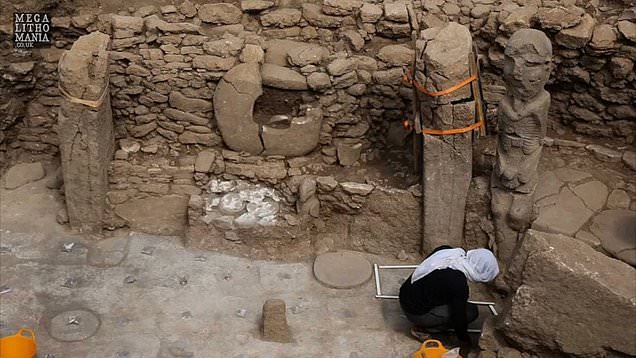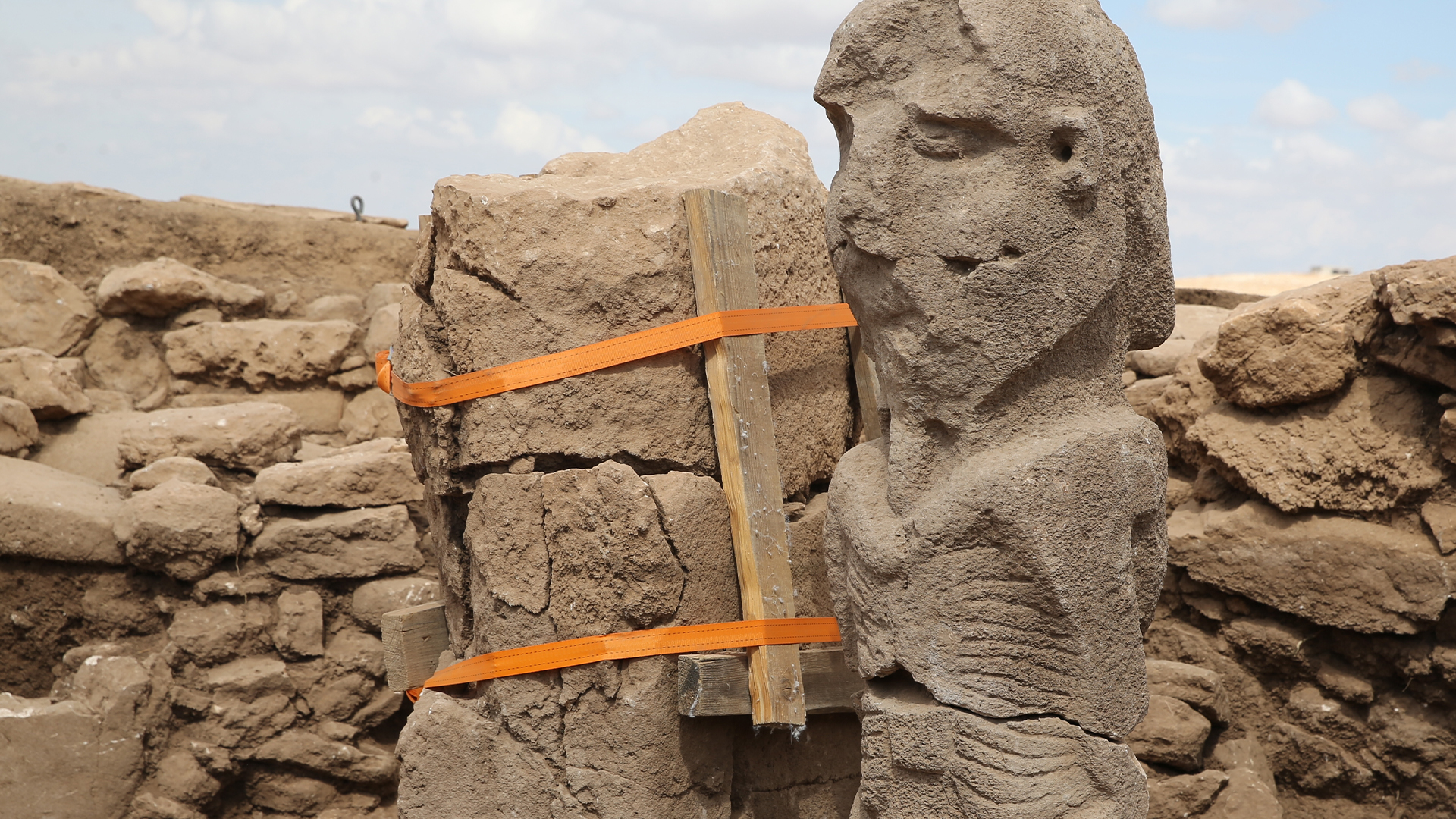Archaeologists in Turkey have unearthed a nearly 11,000-year-old statue that may depict a giant man clutching his penis, along with a life-size wild boar statue. The two statues come from the neighboring sites of Gobekli Tepe and Karahan Tepe, which are among the oldest temple sites in the world.

The wild boar statue, which is carved from limestone, was found at Gobekli Tepe and dates to between 8700 B.C. and 8200 B.C. It measures 4.4 feet (1.4 meters) long and 2.3 feet (0.7 m) high, the German Archaeological Institute said in a statement. Archaeologists detected red, black and white pigments on its surface, indicating that the sculpture was once painted. Archaeologists unearthed the large sculpture of the manat the site of Karahan Tepe, about 22 miles (35 kilometers) from Gobekli Tepe. It depicts a 7.5-foot-tall (2.3 m) man, according to a translated statement from Turkey’s ministry of culture and tourism. The person’s ribs, spines and shoulders are particularly pronounced, and the person may actually be depicted as being dead, the statement said.

These discoveries, “represent the latest spectacular finds from these sites which are transforming our understanding of pre-agricultural communities,” Benjamin Arbuckle, an anthropology professor at the University of North Carolina at Chapel Hill who was not involved with the excavations, told Live Science in an email.
Researchers also found a small sculpture of a vulture nearby at Karahan Tepe. While archaeologists didn’t say how old the newfound statues at, Karahan Tepe are, the site is around 11,000 years old and contains other sculptures and buildings.

Archaeologists used to think that the hunter-gatherer communities in southwest Asia around 11,000 years ago “were relatively simple, small in scale, and generally egalitarian,” Arbuckle said. But the discoveries at Gobekli Tepe and Karahan Tepe over the last 30 years have disproved this idea, Arbuckle said.

Gobekli Tepe is a sprawling, megalithic site filled with T-shaped pillars and sophisticated sculptures depicting animals, abstract symbols and human hands. The site was likely used in funerary rituals, according to the United Nations Educational, Scientific and Cultural Organization. The presence of such a massive, sophisticated complex suggests that hunter gatherer communities in the region were not as simple as once thought but rather were organized in a way that allowed them to build great works of architecture.
The purpose of the recently found sculptures is unclear. “The Karahan Tepe finds strike me as the most interesting,” Ted Banning, an anthropology professor at the University of Toronto who is not involved with the research, told Live Science in an email. “Any interpretation of the statue is conjectural at this point,” Banning said but suggested it was likely that the person shown is dead. It may represent “an important ancestor associated with the building in which it was found.”

The figure’s pose may give a further clue about its purpose. “The fact that the figure is clutching its penis is also consistent with this interpretation by potentially symbolizing that this person was the progenitor of a social group, such as a lineage or clan, associated with the building,” Banning said.
Banning thinks that structures at Karahan Tepe and Gobekli Tepe may have been used as houses rather than temples, “in which case it makes a lot of sense that each would have its own lineage ancestor,” Banning said.

It’s not surprising that the wild boar sculpture has pigments, he added. “I think it’s plausible that much or even most of the sculpture at these sites was originally painted”, Banning said, noting that paint doesn’t preserve well in the archaeological record.
Archaeologists involved with the excavations did not return requests for comment at time of publication.





